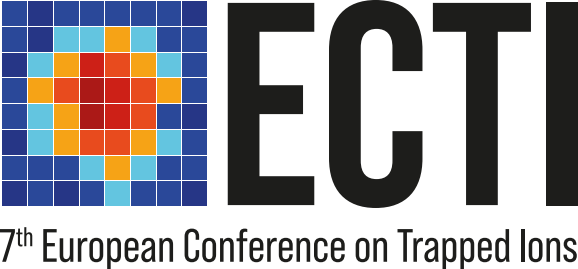Speaker
Description
Sensors based on the wave nature of a massive particle are expected to be one of the next generations’ high-performance sensing technologies. Atoms and ions are ideal for such use since they give us the capability to control their quantum states using optical means precisely. A Laser-cooled ion in an ion trap is an important platform for quantum sensing due to its ideally isolated condition and trap stability and controllability.
We aim to develop a gyroscope using a matter-wave interference of an ion. The ion trap gyroscope, whose feasibility has been theoretically discussed by Campbell and Hamilton$^1$, requires the interferometry between the states of a clockwise-rotating and a counter-clockwise-rotating wave packet of an ion in a two-dimensional isotropic potential. This is a matter-wave version of a Sagnac interferometer.
Although the concrete scheme of the ion Sagnac interferometer is clear, there are several technical challenges to realizing it. First, we need to realize a matter-wave interference of an ion in the multi-dimensional motion. We have realized the three-dimensional ion matter-wave interference by applying the momentum kick onto the ion along the direction diagonal to all the fundamental axes of the trap$^2$. Second, the non-adiabatic trap potential displacement is essential to increase the interference area for the gyroscope operation. The direction of the potential displacement must be perpendicular to the momentum kick. We developed the method to realize the non-adiabatic trap potential displacement as large as 10 microns$^3$. Third, the trap potential needs to be circular to realize a closed trajectory of an ion after a number of rotations inside the trap for the two-dimensional matter-wave interference. We experimentally investigated how the trap potential gets deformed under the fine-tuning of the trap frequencies from careful trap frequency measurements and calculations of the trap potential. Recently, we constructed a whole experimental setup on a rotatable optical table to rotate the entire system with an angular velocity of up to 2 degrees per second. In the presentation, we will discuss the detail of our results.

